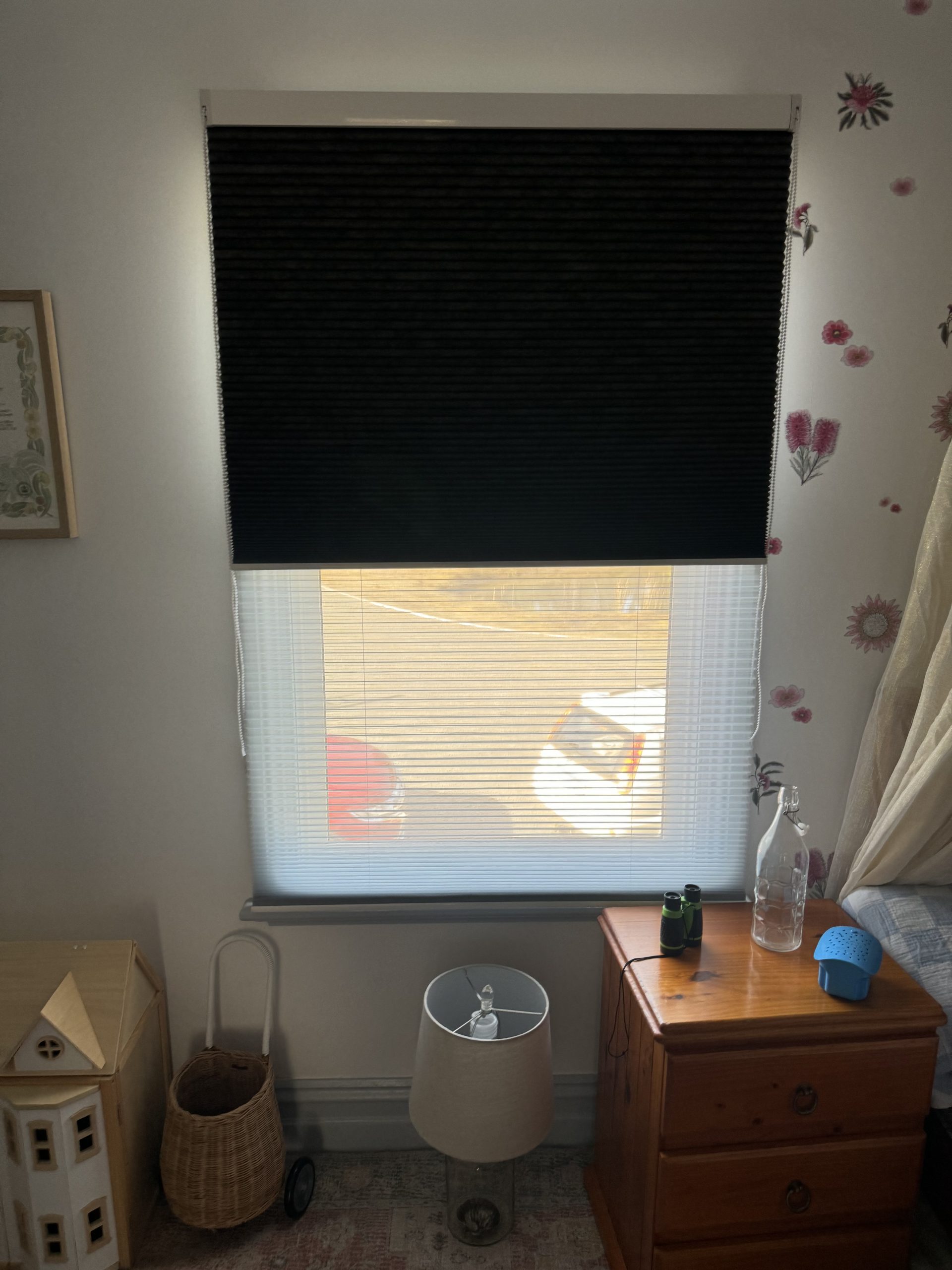
14/08/2024|
management|
0 Comments
[vc_row][vc_column][vc_column_text]
The terms “day-night honeycombs” and “dual honeycombs” are often used in the context of window treatments and blinds, particularly those that feature honeycomb or cellular designs. Here’s a breakdown of each:
Day-Night Honeycombs
- Design: These blinds have a versatile design that incorporates two types of fabrics or cell structures in one unit.
- Function: They offer a combination of sheer and opaque materials. Typically, one layer is designed for light filtration (sheer) and the other for privacy and light blocking (opaque). See image
- Use: The idea is to provide the benefits of both styles in a single blind, allowing users to adjust the level of light and privacy based on their needs throughout the day. For example, you can have the sheer layer down during the day to let in natural light while keeping the opaque layer up for privacy at night.
Dual Honeycombs
- Design: Dual honeycombs refer to blinds that have two separate layers of honeycomb cells, creating a more insulated and energy-efficient product. Similar in function to that of dual roller blinds.
- Function: This design enhances thermal insulation and soundproofing compared to single-layer honeycomb blinds. The double layer of cells traps air and provides better insulation against heat and cold. In the case of dual honeycombs the headbox is wider and both blinds operate independently of each other.
- Use: These are particularly useful for improving energy efficiency in a home, as they help maintain a stable indoor temperature by reducing heat loss in winter and keeping the heat out in summer. It provided more flexibility than day/night honeycombs in that both blinds are in the one headbox and can both be lowered increasign the thermal effeciecnies of your honeycomb blinds.
Summary
- Day-Night Honeycombs: Focus on providing adjustable light control and privacy by combining sheer and opaque layers.
- Dual Honeycombs: Emphasize improved insulation and energy efficiency with a design that incorporates two layers of honeycomb cells.
Both types offer specific benefits, so the choice between them would depend on whether your priority is light control and privacy or energy efficiency and insulation.
[/vc_column_text][/vc_column][/vc_row][vc_row][vc_column][us_gallery ids=”24383,24384,24385,24386″][/vc_column][/vc_row]